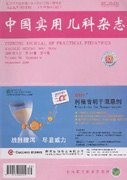|
Longitudinal study of infant sleep problems and their influencing factors
ZHOU Zi-qi,LI Zheng,YE Ya,et al
2021, 36(7):
533-537.
DOI: 10.19538/j.ek2021070612
Objective To explore the major sleep problems and influencing factors of infants at the ages of 1 month and 6 months through longitudinal questionnaire survey. Methods 600 healthy infants aged 1 month were selected,who visited Chongqing Health Center for Women and Children from May to August 2014 for health management. A self-made sleep questionnaire was used to investigate the sleep status of infants at the age of 1 month and 6 months respectively.Logistic regression model was used to analyze the correlation between major sleep problems of infants and some factors,such as parents’ sleep behaviors. Results The incidence of night-waking,difficulty in falling asleep and night crying at 1 month was 30%,17% and 14.1%,respectively,and at 6 months it was 7.3%,9.3% and 13.1%,respectively. The incidence of night-waking and difficulty in falling asleep in infants decreased significantly with the increase of month age(P<0.05). Results of the Logistic regression analysis model of sleep problems of infants at 1 month old were:(1)body touch,sleeping alone,putting the infant back into bed after being picked up and making quiet,night feeding were the protective factors of night-waking,while diaper changing was the risk factor;(2)listening to music,orderly bedtime routine,comforting without holding,putting the infant back into bed after being picked up and making quiet were protective factors for difficulty in falling asleep,while diaper changing was the risk factor;(3)orderly bedtime routine,watching and waiting,holding until falling asleep were all protective factors of night-crying. Logistic regression model analysis results of sleep problems of infants aged 6 months were:(1)the risk factors of night-waking included putting the infant back into bed after being picked up and making quiet,holding the infant until falling asleep and changing diapers,and parent-child interaction before bedtime was the protective factor for night-crying;(2)listening to music,sleeping alone in a small bed and sleeping alone were protective factors for difficulty in falling asleep;(3)touching orderly bedtime routine and comforting without holding were protective factors for night-crying. Conclusion Sleep problems in infants are common and decrease with the increase of age.The influencing factors of sleep problems at the age of 1 month and 6 months are different,so comprehensive preventive measures are beneficial to the prevention of infant sleep problems.
|

